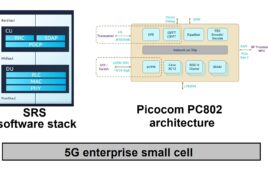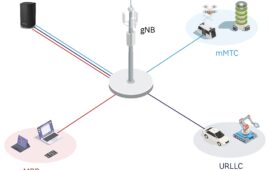Microchip’s TimeProvider 4100 adds virtual Precision Reference Time Clock support, transferring time throughout a network.
With IEEE 1588 moving into 5G networks, having a grandmaster clock becomes essential for the protocol to distribute time around a network. Microchip’s IEEE 1588v2 grandmaster clock, TimeProvider 4100 Release 2.1, adds features such as virtual Precision Reference Time Clock (vPRTC). With vPRTC, can can develop a redundant distribution timing architecture that brings timing precision to within 100ns over existing optical networks. There’s no need to illuminate “dark” fibers for timing, which adds to network cost.
Adding network timing distribution to 5G networks lets the many new small cells needed for mmWave support to rely on the network for timing. Unlike macro cells, which may have their own GPS receivers for timing, small cells can use IEEE 1588 Precision Time Protocol (PTP) based on grandmaster clocks with time information distributed through the network. Thus, each cell doesn’t need its own GPS receiver, which is subject to jamming and tampering.
Microchip describes the TimeProvider 4100 as a “gateway clock” in that it accepts multiple inputs from Global Navigation Satellite Systems (GNSS), Synchronous Ethernet (SyncE), and IEEE 1588 PTP and E1/T1 digital transmission links, distributing timing flows to multiple endpoints such as macro base stations and 5G mmWave small cells. Standard base unit with 8 Ethernet ports, four E1/T1 ports, one craft port, two 1PPS/ToD ports and two 1PPS/10 MHz ports. Optional expansion modules add 16 E1/T1 ports or four SFP and four SFP+ ports. The Ethernet port module provides a combination of four 100Mbps and four 1GE ports or eight 1GE ports or a combination of four 1GE ports and four 10GE ports.
Release 2.1 also adds Network Time Protocol daemon (NTPd) support, which is used for setting time-of-day clocks in networked computers. It also supports ITU-T Recommendation G.8272.1: Timing characteristics of enhanced primary reference time clocks.
Software Release 2.1 is available for existing and new TimeProvider 4100 grandmaster clocks.





Tell Us What You Think!